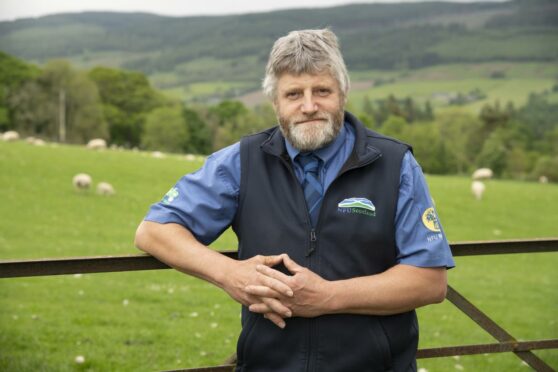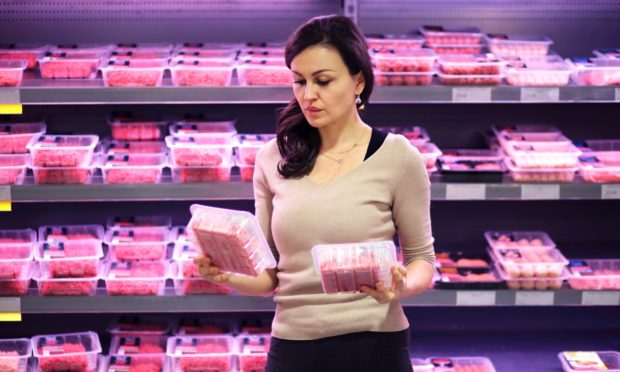The chief of Scotland’s farming union has thanked members of the public for supporting the sector in the past year.
NFU Scotland president, Martin Kennedy, issued a note of thanks to shoppers as new figures show an increase in sales of British and Scottish red meat and dairy products.
Data from red meat levy body Quality Meat Scotland (QMS) shows sales of red meat in the UK were up 7% in the 12 weeks to July 3, when compared with the same pre-Covid period in 2019.
QMS said the growth was mainly driven by sales of beef, and data for August shows the value of sales of sausages was up £5 million, while the value of sales of fresh beef was up £1.7m.
UK levy body, the Agriculture and Horticulture Development Board (AHDB), has also reported growth in the dairy sector with sales of cow’s milk and cheese up 4.2% and 4.5% respectively in the past year.
Mr Kennedy welcomed the sales figures and said: “In these well documented, challenging times for all, it is extremely encouraging and appreciated that there is a demand for Scottish produce.
“We as an industry have much to be proud of, with our high environmental and welfare standards, and I want to thank the public for their support of Scottish agriculture.”
He said farmers greatly appreciated consumers making informed choices to ask for and buy Scottish produce in shops and restaurants.
“It is also important that supermarkets also play their part in ensuring that British and Scottish produce is readily available on shelves,” added Mr Kennedy.
Meanwhile, new research commissioned by farm assurance body Red Tractor has shown high levels of trust for home-grown food among British consumers.
More than 3,500 adults across the UK were quizzed on their attitudes towards food by YouGov with 84% saying they trusted food from the UK.
The research also found 48% cited high standards and regulation as the reason they trust food in the UK, and 70% believe inspection and assurance schemes play a role in ensuring the UK’s food is safe and of good quality.
Trust in food from outside the UK varied, with imported food produced in Ireland and New Zealand attracting the highest levels of trust amongst UK consumers, followed by EU countries such as Sweden, Germany, Italy and the Netherlands.
Only a quarter of those surveyed said they trusted food from the USA, and 11% said they trusted food from China.
Red Tractor chairman, Christine Tacon, welcomed the findings and said domestic standards were key to maintaining consumer trust.
She said: “If we want to maintain trust in UK food over the coming years, the most important thing isn’t what trade deals we sign with other countries.
“It’s whether we keep backing our food standards regime, led by the Food Standards Agency, and supported by the many food assurance schemes which have been established over the past twenty years.”












